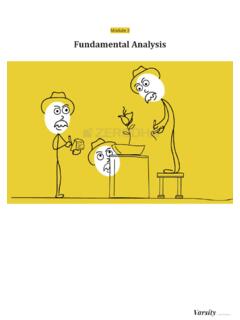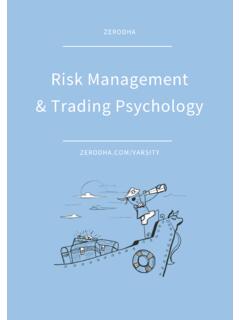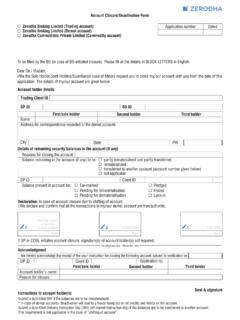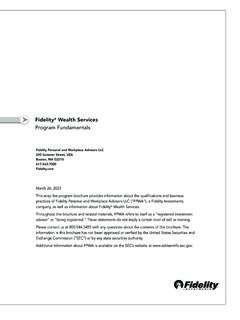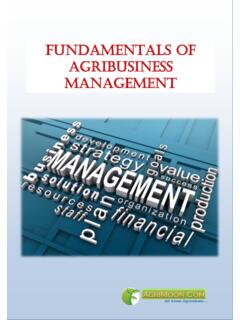Transcription of Module 2 Technical Analysis - Amazon Web Services
1 Module 2 Technical Analysis Overview The previous Module set us on a good plane with the basic understanding about the stock markets. Taking cues from the previous Module , we now know that developing a well researched point of view is critical for stock market success. A good point of view should have a directional view and should also include information such as: 1. Price at which one should buy and sell stocks 2. Risk involved 3. Expected reward 4. Expected holding period Technical Analysis (also abbreviated as TA) is a popular technique that allows you to do just that. It not only helps you develop a point of view on a particular stock or index but also helps you define the trade keeping in mind the entry, exit and risk perspective. Like all research techniques, Technical Analysis also comes with its own attributes, some of which can be highly complex. However technology makes it easy to understand.
2 We will discover these attributes as we proceed along this Module . Technical Analysis , what is it? Consider this analogy. Imagine you are vacationing in a foreign country where everything including the language, culture, climate, and food is new to you. On day 1, you do the regular touristy activities, and by evening you are very hungry. You want to end your day by having a great dinner. You ask around for a good restaurant and you are told about a nice food street which is close by. You decide to give it a try. To your surprise, there are many vendors selling different varieties of food. Everything looks different and interesting. You are absolutely clueless as to what to eat for dinner. To add to your dilemma you cannot ask around as you do not know the local language. So given all this, how will you make a decision on what to eat? 1 Well, you have two options to figure out what to eat.
3 Option 1: You visit a vendor, figure out what they are cooking / selling. Check on the ingredients used, cooking style, probably taste a bit and figure out if you actually like the food. You repeat this exercise across a few vendors, after which you would most likely end up eating at a place that satisfies you the most. The advantage with this technique is that you know exactly what you are eating since you have researched about it on your own. However on the flip side, the methodology you adopted is not really scalable as there could be about 100 odd vendors, and with limited time at your disposal, you can probably cover about 4 or 5 vendors. Hence there is a high probability that you could have missed the best tasting food on the street! Option 2: You just stand in a corner and observe all the vendors. You try and find a vendor who is attracting the maximum crowd. Once you find such a vendor you make a simple assumption - The vendor is attracting so many customers which means he must be making the best food!
4 Based on your assumption and the crowd s preference you decide to go to that particular vendor for your dinner. Chances are that you could be eating the best tasting food available on the street. The advantage of this method is the scalability. You just need to spot the vendor with the maximum number of customers and bet on the fact that the food is good based on the crowd s preference. However, on the flipside the crowd need not always be right. If you could recognize, option 1 is very similar to Fundamental Analysis where you research about a few companies thoroughly. We will explore about Fundamental Analysis in greater detail in the next Module . 2 Option 2 is very similar to Technical Analysis where one scans for opportunities based on the current trend aka the preference of the market. Technical Analysis is a research technique to identify trading opportunities in market based on the actions of market participants.
5 The actions of markets participants can be visualized by means of a stock chart. Over time, patterns are formed within these charts and each pattern conveys a certain message. The job of a Technical analyst is to identify these patterns and develop a point of view. Like any research technique, Technical Analysis stands on a bunch of assumptions. As a practitioner of Technical Analysis , you need to trade the markets keeping these assumptions in perspective. Of course we will understand these assumptions in details as we proceed along. Also, at this point it makes sense to throw some light on a matter concerning FA and TA. Often people get into the argument contending a particular research technique is a better approach to market. However in reality there is no such thing as the best research approach. Every research method has its own merits and demerits. It would be futile to spend time comparing TA and FA in order to figure out which is a better approach.
6 Both the techniques are different and not comparable. In fact a prudent trader would spend time educating himself on both the techniques so that he can identify great trading or investing opportunities. Setting expectations Often market participants approach Technical Analysis as a quick and easy way to make a windfall gain in the markets. On the contrary, Technical Analysis is anything but quick and easy. Yes, if done right, a windfall gain is possible but in order get to that stage one has to put in the required effort to learn the technique. If you approach TA as a quick and easy way to make money in markets, trading catastrophe is bound to happen. When a trading debacle happens, more often than not the blame is on Technical Analysis and not on the trader s inability to efficiently apply Technical Analysis to markets. Hence before you start delving deeper into Technical Analysis it is important to set expectations on what can and cannot be achieved with Technical Analysis .
7 1. Trades TA is best used to identify short term trades. Do not use TA to identify long term investment opportunities. Long term investment opportunities are best identified using fundamental Analysis . Also, If you are a fundamental analyst, use TA to calibrate the entry and exit points 2. Return per trade TA based trades are usually short term in nature. Do not expect huge returns within a short duration of time. The trick with being successful with TA 3 is to identify frequent short term trading opportunities which can give you small but consistent profits. 3. Holding Period Trades based on Technical Analysis can last anywhere between few minutes and few weeks, and usually not beyond that. We will explore this aspect when we discuss the topic on timeframes. 4. Risk Often traders initiate a trade for a certain reason, however in case of an adverse movement in the stock, the trade starts making a loss.
8 Usually in such situations, traders hold on to their loss making trade with a hope they can recover the loss. Remember, TA based trades are short term, in case the trade goes sour, do remember to cut the losses and move on to identify another opportunity. Key takeaways from this chapter 1. Technical Analysis is a popular method to develop a point of view on markets. Besides, TA also helps in identifying entry and exit points 2. Technical Analysis visualizes the actions of market participants in the form of stock charts 3. Patterns are formed within the charts and these patterns help a trader identify trading opportunities 4. TA works best when we keep a few core assumptions in perspective 5. TA is used best to identify short terms trades 4 Chapter 3 Introducing Technical Analysis 69 Overview In the previous chapter we briefly understood what Technical Analysis was all about.
9 In this chapter we will focus on the versatility and the assumptions of Technical Analysis . Application on asset types Probably one of the greatest versatile features of Technical Analysis is the fact you can apply TA on any asset class as long as the asset type has historical time series data. Time series data in Technical Analysis context is information pertaining to the price variables namely open high, low, close, volume etc. Here is an analogy that may help. Think about learning how to drive a car. Once you learn how to drive a car, you can literally drive any type of car. Likewise you only need to learn Technical Analysis once. Once you do so, you can apply the concept of TA on any asset class equities, commodities , foreign exchange, fixed income etc. This is also probably one of the biggest advantages of TA when compared to the other fields of study. For example when it comes to fundamental Analysis of equity, one has to study the profit and loss, balance sheet, and cash flow statements.
10 However fundamental Analysis for commodities is completely different. 5 If you are dealing with agricultural commodity like Coffee or Pepper then the fundamental Analysis includes analyzing rainfall, harvest, demand, supply, inventory etc. However the fundamentals of metal commodities are different, so is for energy commodities . So every time you choose a commodity, the fundamentals change. However the concept of Technical Analysis will remain the same irrespective of the asset you are studying. For example, an indicator such as Moving average convergence divergence (MACD) or Relative strength index (RSI) is used exactly the same way on equity, commodity or currency. Assumption in Technical Analysis Unlike fundamental analysts, Technical analysts don t care whether a stock is undervalued or overvalued. In fact the only thing that matters is the stocks past trading data (price and volume) and what information this data can provide about the future movement in the security.
